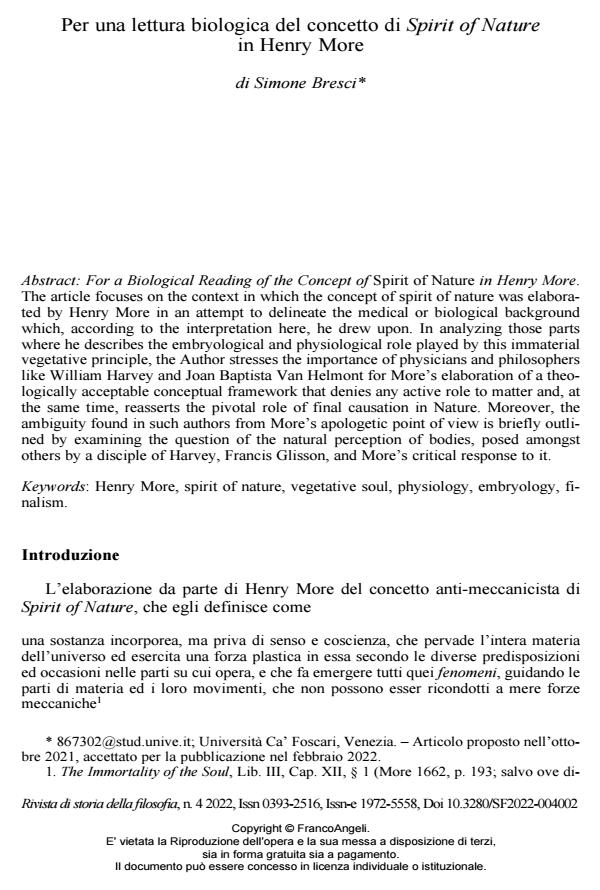Per una lettura biologica del concetto di Spirit of Nature in Henry More
Titolo Rivista RIVISTA DI STORIA DELLA FILOSOFIA
Autori/Curatori Simone Bresci
Anno di pubblicazione 2023 Fascicolo 2022/4
Lingua Italiano Numero pagine 34 P. 629-662 Dimensione file 327 KB
DOI 10.3280/SF2022-004002
Il DOI è il codice a barre della proprietà intellettuale: per saperne di più
clicca qui
Qui sotto puoi vedere in anteprima la prima pagina di questo articolo.
Se questo articolo ti interessa, lo puoi acquistare (e scaricare in formato pdf) seguendo le facili indicazioni per acquistare il download credit. Acquista Download Credits per scaricare questo Articolo in formato PDF

FrancoAngeli è membro della Publishers International Linking Association, Inc (PILA)associazione indipendente e non profit per facilitare (attraverso i servizi tecnologici implementati da CrossRef.org) l’accesso degli studiosi ai contenuti digitali nelle pubblicazioni professionali e scientifiche
The article focuses on the context in which the concept of spirit of nature was elaborated by Henry More in an attempt to delineate the medical or biological background which, according to the interpretation here, he drew upon. In analyzing those parts where he describes the embryological and physiological role played by this immaterial vegetative principle, the Author stresses the importance of physicians and philosophers like William Harvey and Joan Baptista Van Helmont for More’s elaboration of a theologically acceptable conceptual framework that denies any active role to matter and, at the same time, reasserts the pivotal role of final causation in Nature. Moreover, the ambiguity found in such authors from More’s apologetic point of view is briefly outlined by examining the question of the natural perception of bodies, posed amongst others by a disciple of Harvey, Francis Glisson, and More’s critical response to it.
Parole chiave:Henry More, spirit of nature, vegetative soul, physiology, embryology, finalism.
Simone Bresci, Per una lettura biologica del concetto di Spirit of Nature in Henry More in "RIVISTA DI STORIA DELLA FILOSOFIA" 4/2022, pp 629-662, DOI: 10.3280/SF2022-004002